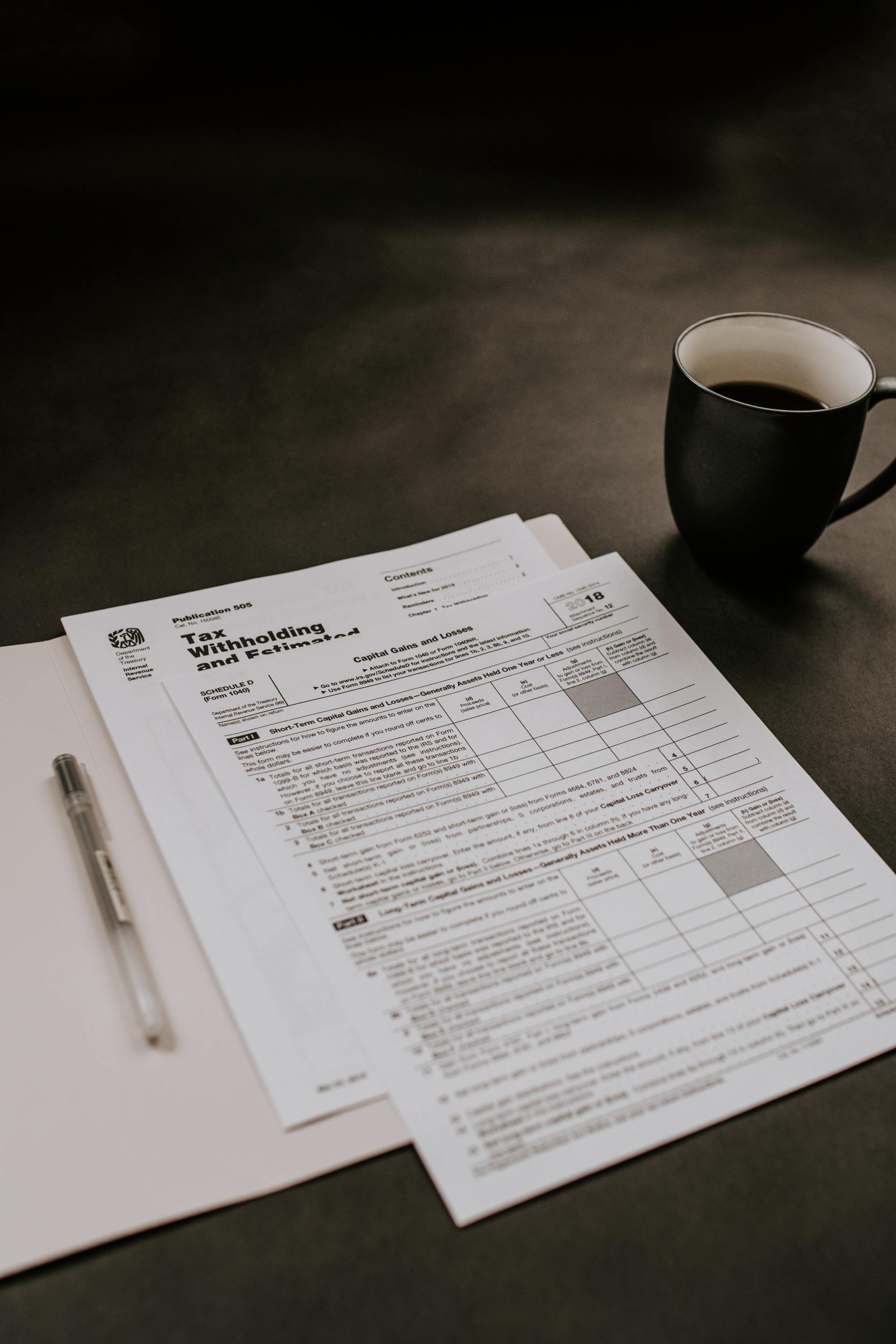Preparing for Tax Season
December 2, 2019
Are You Ready?
Tax season is fast approaching, the IRS will begin accepting electronic returns on January 20 ,
2020. Most people go into a panic, while some welcome the season because they expect nice
tax refunds. Whatever your case, you can make the process easier for yourself and your tax
accountant by preparing yourself early. Below is a tax season checklist (from Nerdwallet.com)
to assist you, and lastly some tips from your accountant to assist them in preparing a complete
and accurate return!
Personal information ( if a new client to your tax accountant)
Let’s start with the obvious items on any tax prep checklist.
- Last year’s taxes, both your federal and — if applicable — state return. These aren’t strictly necessary, but they’re good refreshers of what you filed last year and the documents you used.
- Social Security numbers for yourself, your spouse and all dependents. Remember, in addition to children, dependents can include elderly parents and others.
Income
Gather all the documents that confirm the money you received during the previous year.
- W-2 forms. Employers must issue these by Jan. 31, so keep an eye on your mailboxes, both physical and electronic.
- 1099 forms. Each of these ends with a different suffix, depending on the type of payment you received. For example, form 1099-MISC is for contract work. If you’re paid via a third party such as PayPal or Amazon, you’ll likely get a 1099-K. Investment earnings show up on 1099-INT for interest, 1099-DIV for dividends and 1099-B for broker-handled transactions.
Deductions
Deductions help reduce your taxable income, which generally means a lower tax bill. The key to
claiming deductions is documentation — not only can it protect you if you’re ever audited, it
can cut your tax bill by helping you remember what to claim.
- Retirement account contributions. You can deduct contributions to a traditional IRA or self-employed retirement account. Just be sure to stay within the contribution limits.
- Educational expenses. Students can claim a deduction for tuition and fees they paid, as well as for interest paid on a student loan. The IRS won’t accept your deduction claim without Form 1098-T, which shows your education transactions. Form 1098-E has details on your student loan.
- Medical bills. Medical costs could provide tax savings, but only if they total more than 10% of adjusted gross income for most taxpayers.
- Property taxes and mortgage interest. If your mortgage payment includes an amount escrowed for property taxes, that will be included on the Form 1098 your lender sends you. That document will also show how much home loan interest you can claim on Schedule A.
- Charitable donations. To ensure your generosity pays off at tax time, keep your receipts for charitable donations. The IRS could disallow your claim if you don’t have verification.
- Classroom expenses. If you’re a school teacher or other eligible educator, you can deduct up to $250 spent on classroom supplies.
- State and local taxes. You can deduct various other taxes, including either state and local income or sales taxes (up to $10,000, including property taxes). You don’t need receipts for the sales tax; the IRS provides tables with average amounts you can claim. The tax on a major purchase, however, can be added to the table amount, so keep those receipts.
Credits
Next on the tax prep checklist are credits, which are deductions’ more valuable cousins: They
provide dollar-for-dollar cuts in any tax you owe. But as with deductions, you need
documentation to claim them. Here are some popular tax credits:
- American Opportunity and Lifetime Learning credits. These education-related credits can save you quite a bit of money. As with the tuition and fees deduction, Form 1098-T is required to claim either.
- Child Tax Credit. The standard Child Tax Credit is worth up to $2,000 per child dependent. If you added to your family through adoption, you might be eligible for additional tax credits.
- Retirement savings contributions credit (also known as the Saver’s Credit). Contributions to a 401(k), similar employer-sponsored plan or an IRA might allow you to claim this credit.
Payments
Most of us have income taxes withheld from our paychecks to cover our tax liabilities; that
amount is on our W-2 forms. But if you made federal estimated tax payments during the year,
have this amount handy, too.
This tax prep checklist covers preparation issues common to most filers, but taxes are different
for each of us. Be prepared to tailor the tax prep checklist to your situation.
Tips when working with a Tax Accountant
- If your tax situation is little more complex, schedule your appointment early in the tax season to allow the accountant time to address issues, collect needed documentation and contact IRS if required
- Gather all your relevant tax information (i.e. income statements) if any information is missing contact the payer of the income (i.e. social security, W2, 1099) and have them send a duplicate copy before your appointment
- If unsure about any documentation contact the tax accountant before the appointment and get clarity on the relevancy of the document for income and/or expenses
- Always ask questions regarding your tax return, review and make sure you understand what is being reported before the return is electronically filed or mailed. A good Tax accountant will want you to fully understand and be comfortable with what is being filed.
- If you own a business, compile your income and expenses (if possible) providing a Profit and Loss statement to the accountant, unless accounting services are needed to prepare the statement, and if that is the case schedule your appointment early in the tax season to allow time for accurate preparation.
Follow these steps and your accountant will love you and make you a VIP client!
If you would like more information or schedule a consultation with us, please contact
nkirkland@bythenumberzcpa.com, book online or call 586.296.0771.

Are you a business owner missing out of qualifying deductions because you are not aware of what can be deducted? I have compiled a listing of business deductions, a few that go overlooked year after year to assist business owners in maximizing the taxes, and reducing tax liabilities. Many of the deductions apply to independent contractors, freelancers, limited liability companies, corporations, and partnerships. Click here for you free download of business deductions. For more information contact me nkirkland@bythenumberzcpa.com

Beginning January 1, 2020, the IRS has issued a new W-4 form. This is significant as the recent Tax Reform eliminated personal exemptions and doubled the standard deduction when filing your personal taxes. It is recommended that a new W4 be filed with your employer to ensure the proper withholding is deducted under the new code. It is highly recommended the new form be filed with your employer if you: Work for more than one job If you spouse also works and you file jointly If you claim the child tax credit or other tax credit If you have high income and a more complex return Completing the Form I have received a lot of calls asking “what to do with this new form”, so I have included some instructions to assist people. You must complete steps 1 and 5. Steps 2, 3, and 4 are optional but can be helpful in ensuring your tax withholding more closely matches your tax obligation. When you fill out Step 1 only, your withholding will be computed based on your filing status’s standard deduction and tax rates, with no other adjustments There are certain situations that increasing the withholding should be considered: You hold more than one job at a time or you and your spouse both have jobs (Step 2) You have income from sources other than jobs or self- employment There are certain situations that decreasing the withholding should be considered: You are eligible for income tax credits, child tax credit or credit for dependents (Step 3) You are eligible for deductions, such as itemized deductions, IRA contributions or student loan interest deductions It is also a great idea to use the Tax Withholding Estimator to help ensure maximum accuracy. The link is below. Note you will need your latest paystub (to enter the federal tax withheld from last check, and the YTD federal tax withheld). For more information contact me at nkirkland@bythenumberz.com.

There are tons of how to’s lists out there on the world wide web.. but really it takes more than a list to grasp the understanding of setting up a business and the start of the business ownership journey! It can be overwhelming looking at the lists and the questions that rattle our brains can cause a lot of discouragement. I work with entrepreneurs and business owners on a weekly basis in tackling this hurdle and getting their businesses going and operating successfully. The first step is “creating what you want the business to do” are you providing a product and/or service and what will set you apart from the other 20 businesses doing the same thing?

